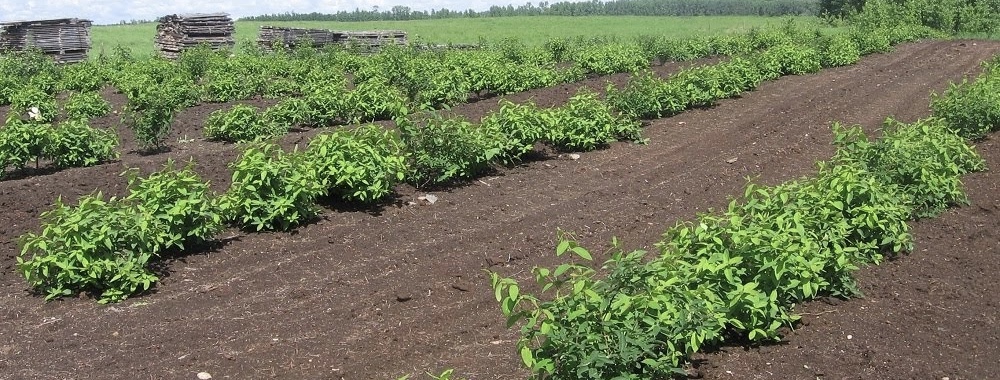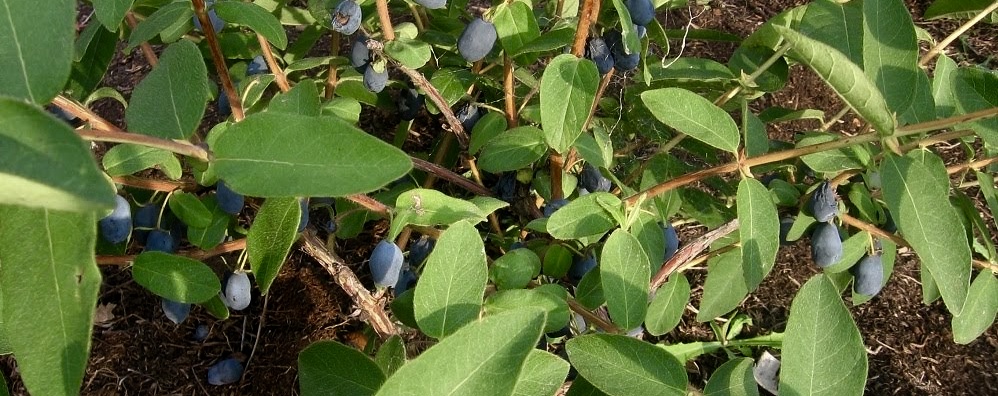A Home Gardener's Guide to Growing Haskap
Wineries that produce Haskap fruit wine, such as the Bee and Thistle Winery, grow a lot of haskap bushes. They require regular maintenance, care and attention. The home gardener can also grow Haskap bushes with basically the same care requirements but on a much smaller scale. This gives families the opportunity to enjoy the beautiful flavour of the berries by using them in such delicacies as ice cream, jams, jellies and smoothies.
Although our Page called “Fruits Used In Our Wines/Haskap” (click on button to access the Page) has a lot of information that the home gardener may find useful, we thought it might be helpful to identify key items from that report, plus information we’ve gathered via Dr. Bob Bors’ research at the University of Saskatchewan, that will help the home gardener grow Haskap bushes successfully.
It is very important to select the correct type of Haskap that will grow in your climate. Although the original name of Haskap was the honeysuckle, and you may see this variety at local gardening centres, not all honeysuckle plants are conducive to growing in cold regions. The University of Saskatchewan created many varieties of Haskap that are specifically designed to grow in Canada’s cold northern climate so look for plants that originated from the University’s research program.
Haskap bushes require pollination. Haskap will not bear fruit on their own as they require pollen from an unrelated variety of Haskap for the bees to do their work. It is interesting to note that Haskap do not have separate male and female plants. One requirement of compatibility, besides being genetically compatible, is same time blooming of your various Haskap bushes. Thus, it is very important for the home gardener to select the right types of Haskap. How does one know which Haskap plants are compatible? The University of Saskatchewan has published the following chart that identifies results of pollination of varieties they have grown at the University. Their varieties are readily available.
A special thank you to Dr. Bob Bors and the University of Saskatchewan for the information.
Soil testing is important. To ensure your soil is compatible with your selected Haskap and required plant fertilizer, it’s a good idea to have your soil tested.
You will need plenty of garden space for the bushes. Each bush will grow to be approximately four feet wide and between four and six feet tall. Commercially planted and mechanically harvested Haskap are planted three feet apart to make a 'wall' that the harvester moves through. Home gardeners don’t need to have Haskap this close together, so four to five feet apart will be fine. This will enable you to walk around each bush instead of having to go to the end of the row. When planting, put the seedling a bit deeper than the nursery container it came in and keep the plants well watered until they become established.
You will need to look after the bushes. The good news is that you don’t have to prune your Haskap bushes like large scale Haskap growing operations do. The bad news is that birds LOVE Haskap berries, so you’ll need to net the bushes soon after the berries come on. Remember, if you can see them, so can the birds. Another problem area to watch for is powdery mildew if it’s a wet humid year. If the leaves contract the infection, they will die and fall off. There are several proactive treatments you can use, such as sulphur powers and garlic sprays.
And soon it’s harvesting time. Haskap plants flower in the spring, usually mid-May, and are harvested approximately 49 days later. Once your bountiful crop is ready, pick the berries by hand and refrigerate or freeze immediately. Enjoy these healthy berries in your favourite desserts, jams and jellies, just to name a few uses. We’d love to hear from you on how you used your berries. And pictures are always appreciated! Enjoy.



